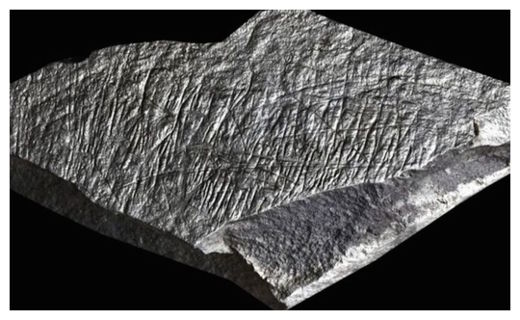
© Sarah Duffy
Newly-found stone artifacts found on the English Channel island of Jersey could hold some of the
oldest man-made carvings ever found on the British Isles, according to a
report from BBC News.
The archeologists who found the artifacts have yet to finish their analysis and publish the results, but
preliminary reports have dated the stone carvings to about 14,000 year ago.The artifacts themselves are stone pieces with criss-crossed line engravings similar to those found at other Paleolithic sites in northern Europe.
If this estimate holds up, it would make artifacts the oldest carvings in the UK since a discovery in 2003. The estimate would also put the carvings' origin at around the end of the last ice age.
The research team that discovered the artifacts has been at the same site in the southeast area of Jersey for the past five years.
"We're hoping this is a hint of what is to come, because at some other sites you get hundreds of these pieces. What we've got at the moment is only a fragment of something much larger," Chantal Conneller, a senior lecturer at the University of Manchester, told BBC News.
Where'd they come from?The carvings are thought to come from the Magdalenian culture that inhabited northern Europe around 14,000 years ago. The Magdalenians were one of several cultures which gradually resettled Europe as the glaciers of the last ice age retreated, and the team is currently using microscopic techniques to analyze the stone carvings.
"We can already say the stones are not natural to the site, they show clear incised lines consistent with being made by stone tools, and they do not have any obvious functional role," said team member Silvia Bello, from London's Natural History Museum.
Conneller said the stones were probably not simply used as cutting boards, and said, "there is organization to the design, with two groups of lines, one set straight and made with a fine tool, and another more curved and often broader.
"This suggests to us something beyond a functional explanation," she added.
To get a precise date for the carvings, the archeology team is planning to use techniques to analyze bone fragments found at the same site, thought to have been a camp for Magdalenian peoples.
"It might well represent some of the first hunter-gather communities to re-colonize the north of Europe after the coldest period of the last Ice Age," Conneller said. The British scientist said the discovery offers important clues to an ancient landscape that remains largely inaccessible.
"The sea level would have been much lower at the time," Conneller said. "To the north of Alderney would be a massive channel river, with a really wide valley - this seems to be a big barrier to human movement.
"But we don't really know anything that was going on in this drowned landscape," she added.

Reader Comments
to our Newsletter